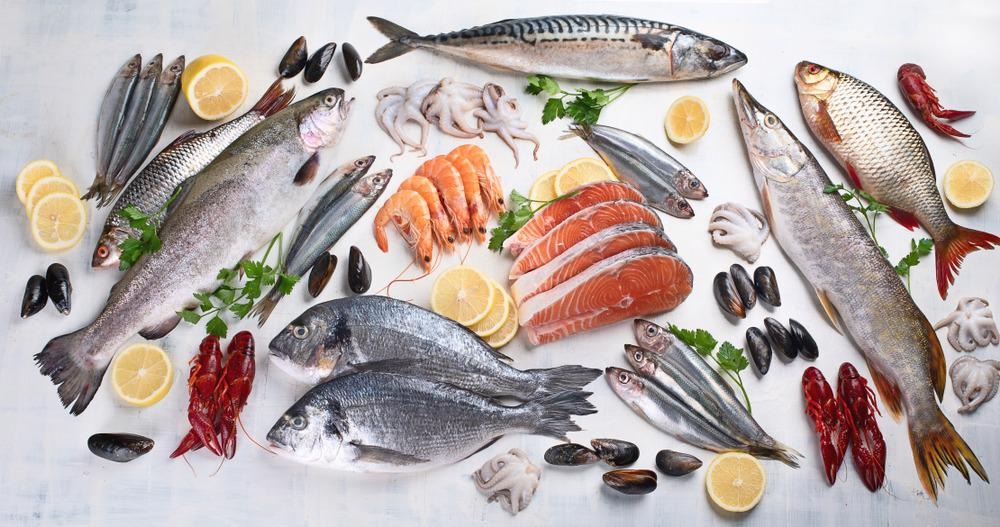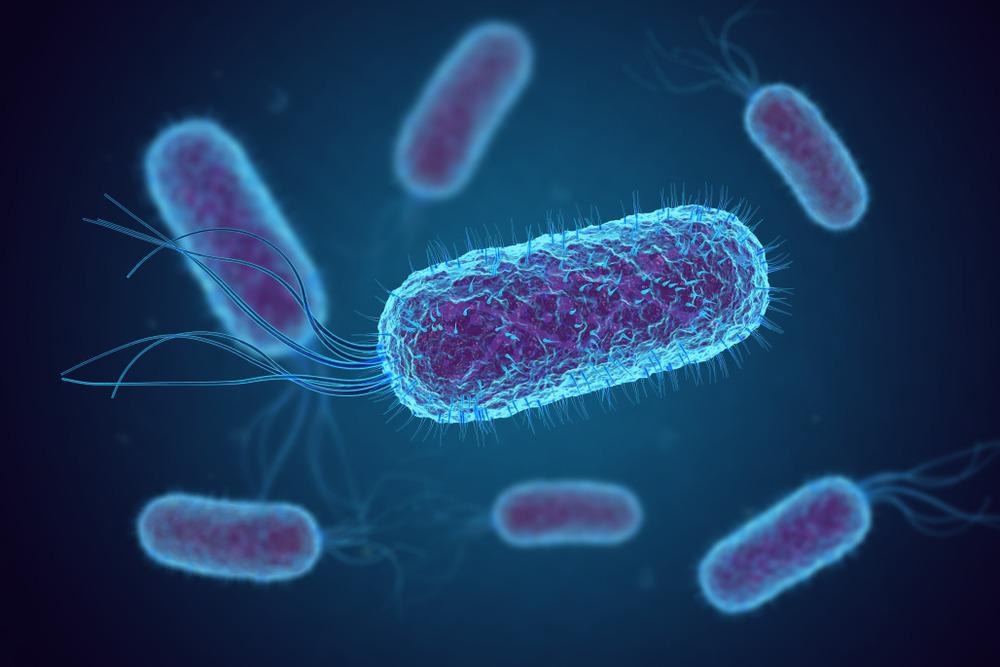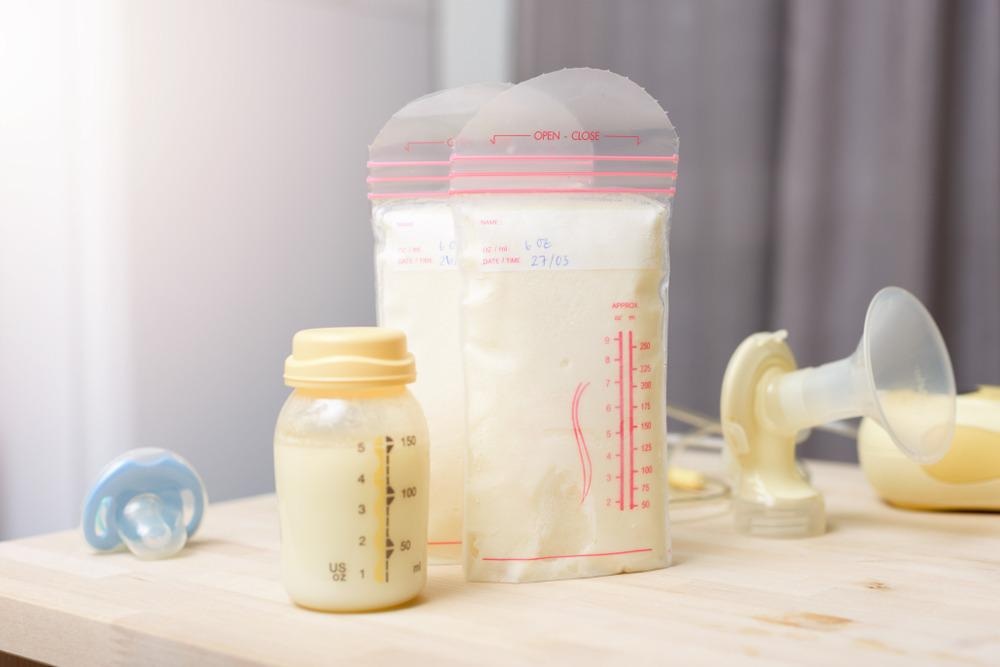- Introduction
- Lipids
- Carbohydrates
- Protein
- Conclusion
- References
- Further Reading
Human milk is a complex and unique fluid tissue that provides nourishment to neonates. The complicated nature of human breast milk differentiates it from all other mammalian milk and there is much that still needs to be uncovered.

Human breast milk. Image Credit: Nor Gal/Shutterstock.com
The understanding of human breast milk is vital as it allows us to develop formula milk with the closest composition to human milk and provide infants with the best possible nutrition. The main component of human milk is water which accounts for 87% and the remaining content is composed of fats, proteins, carbohydrates, etc. This article will cover the biochemistry and composition of human milk.
Lipids
Lipids account for 3-5% of total human milk and play a variable role in energy storage, energy source, being a vehicle for absorption, and more. The fat content is the main contributor to caloric intake for an infant. The fat content is the most variable component of human milk as it is affected by factors such as the lactation stage. However, the fatty acid content is relatively stable and is essential for the natural growth and weight gain of the infant.
Essential fatty acids, a group of naturally occurring unsaturated fatty acids, play various important roles in neonatal development. Human milk also contains docosahexanoic acid (DHA) and eicosapentaenoic acid (EPA) which are long-chain polyunsaturated fatty acids (PUFAs) that have recently been shown to be essential in brain tissue development and retinal development.
This has been associated with a higher IQ in breastfed babies compared to formula milk as formula milk did not include DHA despite its presence in human milk – this has recently changed as this function has been revealed. Fat composition in human milk is also influenced by maternal diet and research has proven that women with high fish intake had a high DHA content in their breastmilk. Additional lipids include sterol and the major sterol in human milk is cholesterol for which the main function is unknown.

Women with high fish intake have a high DHA content in their breastmilk. Image Credit: Tatjana Baibakova/Shutterstock.com
Carbohydrates
Human milk contains monosaccharides, such as glucose, and disaccharides, such as lactose. Lactose is the main carbohydrate and comprises 30-40% of the total energy and plays a role in malabsorption and intolerance syndromes. Lactose is broken down into glucose and galactose by the enzyme lactase and this then provides food for the brain with galactose being implicated in rapid brain development. Lactose is also known to have a beneficial effect on mineral absorptions such as calcium – this is theorized to be due to lactose being converted to lactic acid which lowers the pH and causes increased calcium salt solubility.
Oligosaccharides are the third most prevalent complement in human milk after lactose and lipids. There has been a wide range of oligosaccharides identified composed of different molecules from simple sugars to their derivatives. Oligosaccharides are not readily digested in the stomach and therefore do not greatly contribute to infant nutrition but it is thought to provide protective benefits. These benefits include being the main source of energy for intestinal flora of the breastfed infant by providing metabolic substrate to bacteria such as bifidobacteria and lactobacilli. Oligosaccharides also have anti-adhesive antimicrobial action that then protects from diarrhea-causing pathogens such as E. coli.

Oligosaccharides in breast milk have anti-adhesive antimicrobial action that protects from diarrhea-causing pathogens such as E. coli. Image Credit: fusebulb/Shutterstock.com
Protein
Human milk has a low composition of protein with an average of 1% but they are highly specific and readily bioavailable making it an efficient source rather than abundant. Generally, 70% of the protein is Whey and 30% is casein; this amount greatly changes during different stages of lactation. The abundant whey proteins include immunological proteins, such as lactoferrin, secretory IgA (sIgA), as well as α-lactalbumin which have nutritional roles. Lactoferrin binds to iron in the breastfed baby which deprives pathogens that depend on the iron and protects the infant. α-Lactalbumin is involved in lactose synthesis and binds to zinc and calcium. Secretory immunoglobulin A is essential as it provides support for an infant's immune system whilst its own matures.
Casein has an essential role in providing the infant with essential amino acids and minerals. Casein micelles are the main source of calcium and phosphorous which is necessary for infant bone mineralization. Casein content in human milk is relatively low compared to other mammals and could explain the slow rate of growth in humans comparatively. Casein concentration is relatively low in the initial stages of lactation and increases as lactation progresses.
Conclusion
Human milk is a complicated fluid tissue that provides a multitude of benefits to the infant. Many of these benefits have been exposed but we still lack knowledge regarding the functions of all components and the range of their benefits. Fully comprehending human milk biochemistry and compositions is vital as formula milk aims to be a substitute for human milk. Additionally, further understanding will allow us to further manipulate the components of human milk to provide better nutrition and protection for fragile infants.
References:
- Geddes, D. (2018, July 1). 7 Human Milk: Bioactive Components and Their Effects on the Infant and Beyond · Breastfeeding and Breast Milk – from Biochemistry to Impact, (Ed, Family Larson- Rosenquist Foundation) Georg Thieme Verlag KG. The Global Health Network Collections. https://tghncollections.pubpub.org/pub/7-bioactive-components-and-their-effects/release/2
- Guo, M. R. (2021). Human Milk Biochemistry and Infant Formula Manufacturing Technology (Second ed.). Woodhead Publishing. https://doi.org/10.1016/B978-0-08-102898-8.00002-7
Further Reading
- All Biochemistry Content
- What is Biochemistry?
- What is Bioorganic Chemistry?
- An Introduction to Enzyme Kinetics
- The Use of Biochemistry within Biotechnology
Last Updated: May 11, 2022

Written by
Storay Amiri
Storay attended the University College of London (UCL) to Study Master of Pharmacy and graduated in 2021 with First Class Honors. A four-year integrated master degree with a detailed focus on all parts of medication, from chemistry to body therapeutics, pharmacology, pharmaceutics, and more.
Source: Read Full Article
